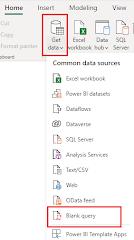Week Number Calculation for each month
Understanding DAX Week Number Calculation with Conditional Logic Dax: Week_num = IF( 'Date'[WeekDayName] in {"Sat", "Sun"}, BLANK(), WEEKNUM('Date'[Date], 2) - WEEKNUM(EOMONTH('Date'[Date], -1) + 1, 2) + 1 ) Explanation: In Power BI and other Microsoft data analysis tools, understanding date calculations is crucial for accurate reporting and visualization. One common requirement is to calculate week numbers, but often, we need to exclude weekends from the count. The provided DAX function accomplishes this task efficiently. Introduction: Date-based analysis often involves tracking data by week, but the definition of a week may vary depending on business requirements. This DAX function not only computes week numbers but also intelligently handles weekends, ensuring that week counts accurately reflect working days. Function Overview: The We...
